A biweekly newsletter with public space news, resources, and opportunities.
A curated dispatch on all things public markets plus the latest announcements from the Market Cities Program.
Ever since the first train lines ripped their way through the heart of American and European cities in the mid-19th Century, transportation development has been viewed as a necessary evil--an economic asset but a threat to safe, quiet, comfortable communities. Tens of thousands of North Americans have lost their homes to highway projects in recent decades, and tens of millions have seen the life sucked out of their neighborhoods as residents and businesses follow these new, wide roads to the outskirts of town.
It's entirely possible to undertake transportation projects that bring life to a place rather than take it away.
It's easy to see why so many people now view transportation "improvements" as the worst that can happen to a place they care about. Too often, that has been the case. But transportation modes can also enhance and enliven a community. Imagine Paris without the Champs Elysees or Staten Island without its famous ferry. Indeed, a growing number of communities have discovered how to use transportation funding to create great public places (see the story in this issue about how Dayton, Ohio used transit funds to revive its downtown).

Using the principles of Placemaking, it's entirely possible to undertake transportation projects--involving foot, bike, transit and even automobile traffic--that bring life to a place rather than take it away. That's been PPS's experience over 30 years of work. You can see the possibilities in the following spots around the world, each of which we have identified as a Great Transportation Place.
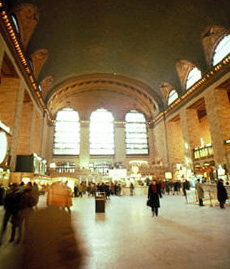
"We used to stride into the city like emperors," lamented the late Senator Daniel Patrick Moynihan, describing the Old Penn Station in New York City before it was demolished to make room for Madison Square Garden. "Now we scurry in like rats." Luckily New Yorkers can still experience the thrill of arrival and departure at Grand Central Terminal, (saved from burial by a sweeping U.S. Supreme Court ruling), which has been restored to its historic grandeur through the work of the Grand Central Partnership. Nowhere does the pulse of the city beat faster than in the grand concourse where vaulted ceilings and soft sunlight illuminate the comings and goings of economic life at one of the most elegant, and celebrated, transit hubs in the world.
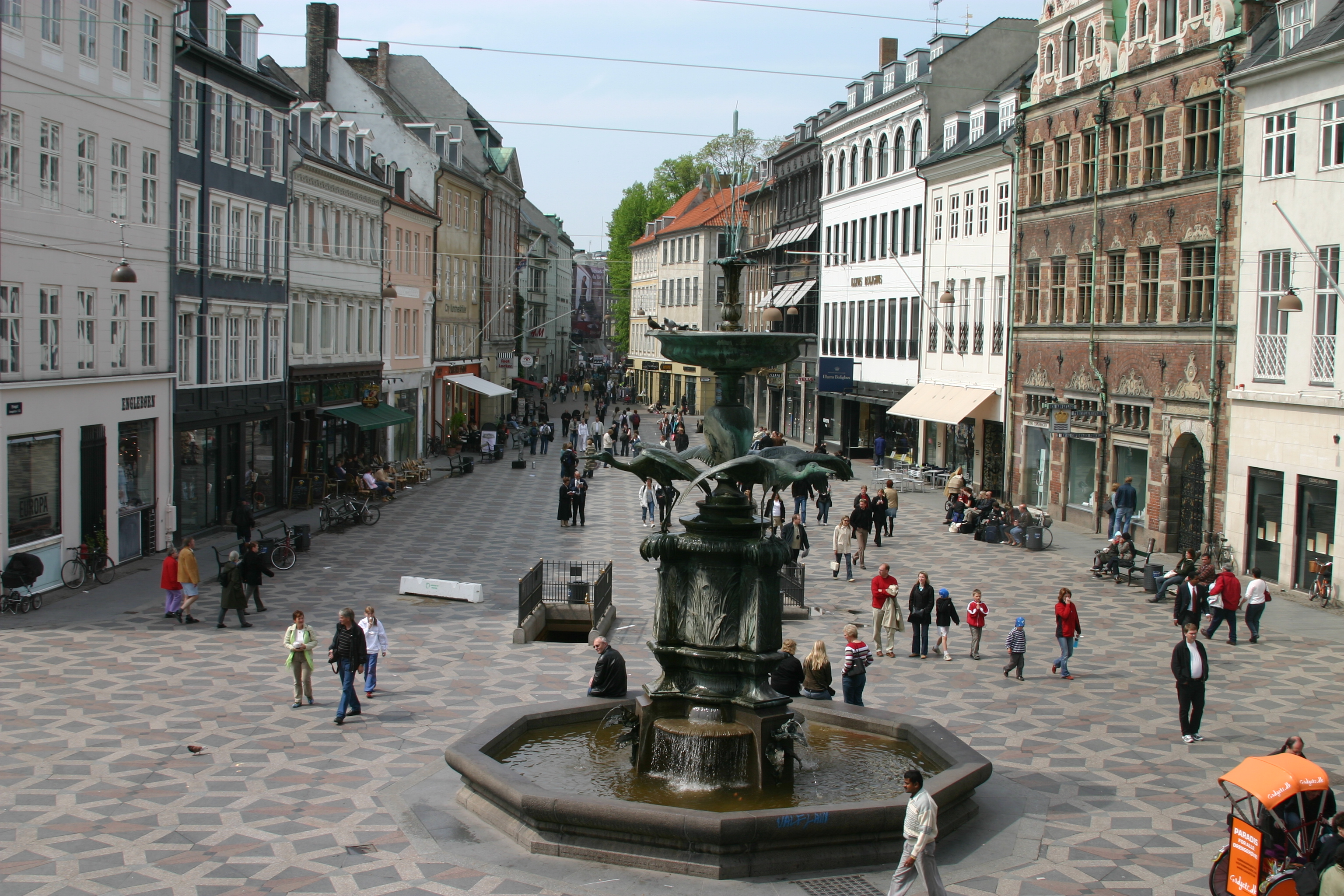
The remarkable network of pedestrian streets in the Strøget district of Copenhagen offers a valuable primer in how to reclaim urban space from traffic. Beginning in 1962, at the urging of local architect and planner Jan Gehl, a few center-city streets were given over to pedestrians. Though initially met with skepticism by car-loving Danes who claimed that public street life was strictly for southern Europeans, the pedestrianized area soon became very popular with Copenhagers of all ages. Gradually, over the years, the pedestrian network has expanded, offering an important lesson according to Gehl. Big changes all at once fuel a backlash; small changes over a period of time are much better accepted.
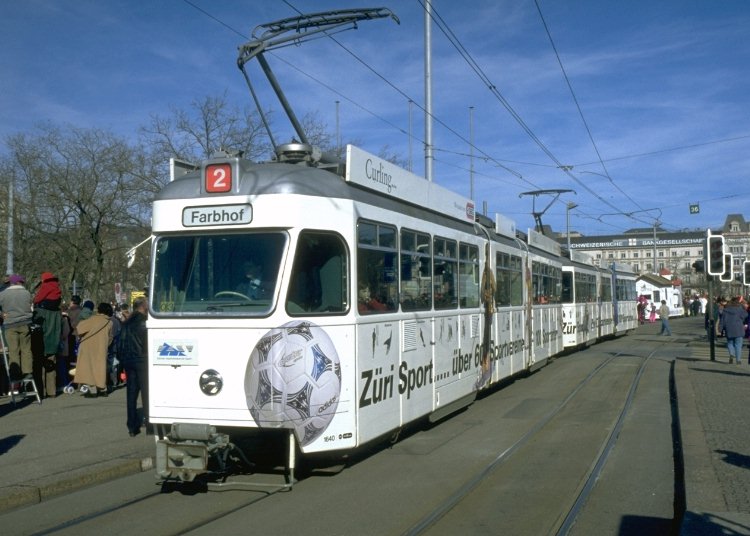
The story of Zurich, Switzerland mirrors the incremental successes of Copenhagen, with a focus on transit instead of pedestrian streets. About 30 years ago, the city introduced its first bus network. Over time, bus routes were gradually given special lanes, and later on these lanes were converted to tram lines. The whole city is now easily navigable by public transit, and has gradually weaned itself from automobile dependency. The upshot is that Zurich now has, in addition to its world-class transit system, a wonderful network of streets to walk on with little hassle from vehicles.
In Minneapolis and nearby suburbs, a web of trails expanding along old rail corridors and reclaimed riverfront is turning into a separate-but-almost-equal road system offering bikers the opportunity to scoot through town with a speed and ease that motorists sometimes envy. Local officials have been slow in opening up critical connections between these trails, but the growing system is impressive--and even well-used during the chilly winter months.
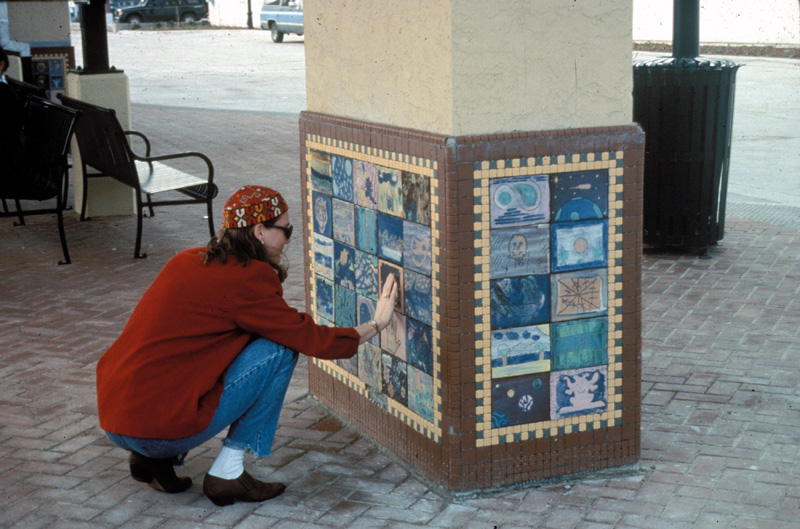
Don't worry about missing the crosstown express in Corpus Christi, Texas. in That's because, thanks to the foresight of local leaders and the Placemaking expertise of PPS, the Staples Street Bus Transfer Center is a great place for bus riders, not just buses. It's easy to spot a friendly face here, since the plentiful seating and colorful artwork--which people love to get close to and touch--have made this place a favorite meeting spot for downtown residents and workers.
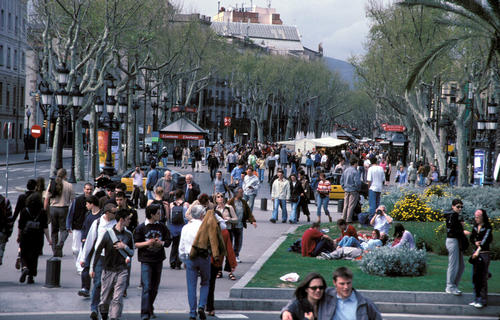
Yes, pedestrians and cars can co-exist peacefully, and in an exhilarating public space to boot. That's exactly what you'll find at Barcelona's Las Ramblas, a sequence of three pedestrian-oriented boulevards that also accommodate four lanes of traffic. The center medians of Las Ramblas are more accurately described as promenades--60 feet wide and filled with throngs of people throughout the day, not to mention a huge number of commercial and cultural enterprises. A row of trees separates the central walkway from automobile traffic - two lanes on either side (plus one parking lane). The arrangement succeeds because people on foot have precedence: Cars must accommodate pedestrians.
Carpoolers, bus riders, and cyclists have it good in Missoula, Montana. In return for choosing an option other than drive-alone commuting at least once a week, locals can join the "Way to Go! Club" and receive gifts, access to special events, and free taxi rides home from work when necessary. Established by the public/private partnership Missoula in Motion, the Club now boasts 3500 members. Kudos also go to the Missoula Parking Commission, which plans bike routes and supports transit instead of just building parking spaces.
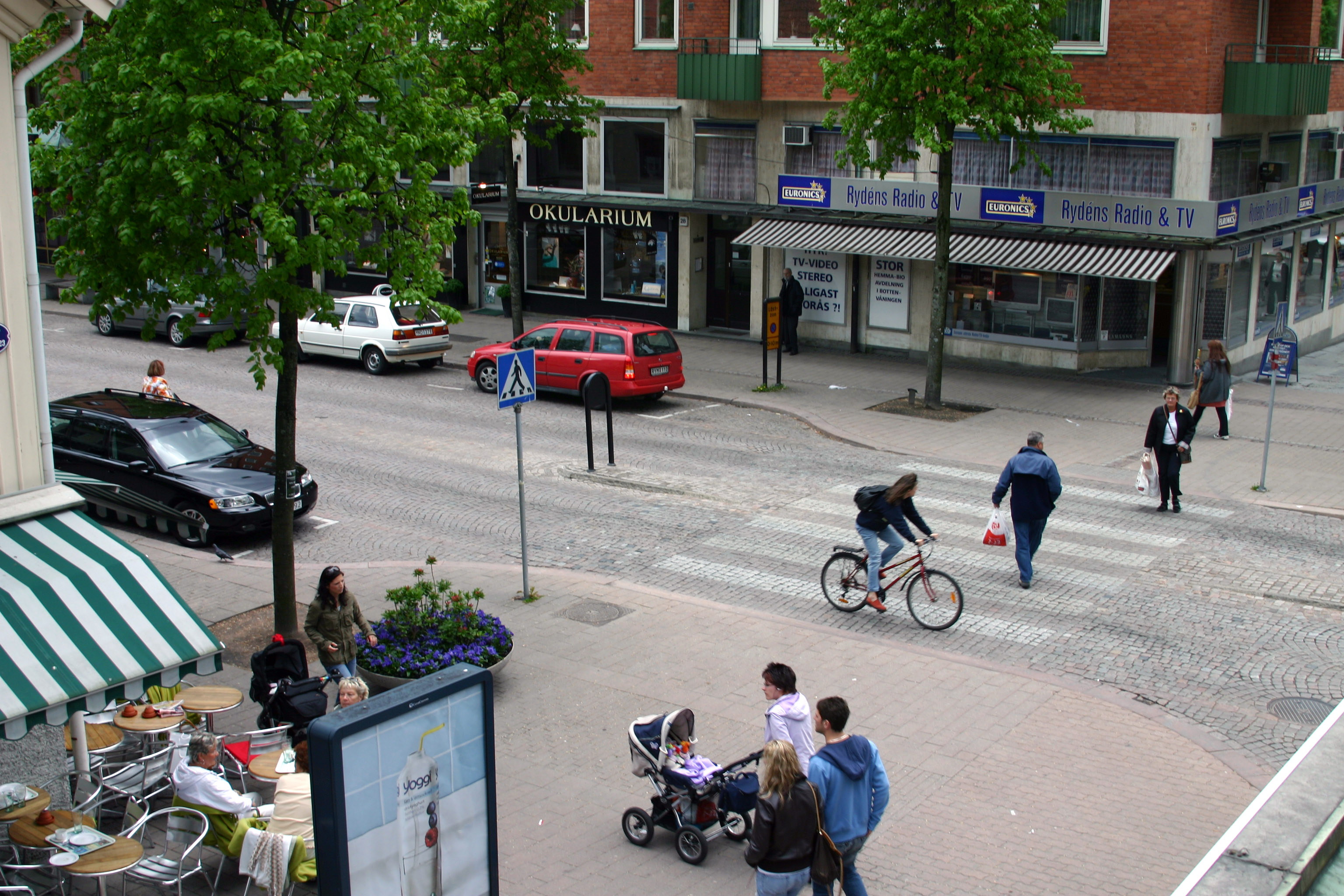
Bicyclists, moms with strollers, people in wheelchairs, transit riders, window-shoppers, and even cars all have their place on Alleg Street in Borås, Sweden. This works because of the careful design of the street, notably the diversity of paving surfaces that help define different functions at various spots. Sidewalks are smoother where foot traffic is fastest, for instance, just as curbs disappear where vehicular traffic should be slowest. All told, no fewer than six different types of paving surfaces differentiate sidewalks, waiting areas, curbs, bike lanes, crosswalks, and car lanes.
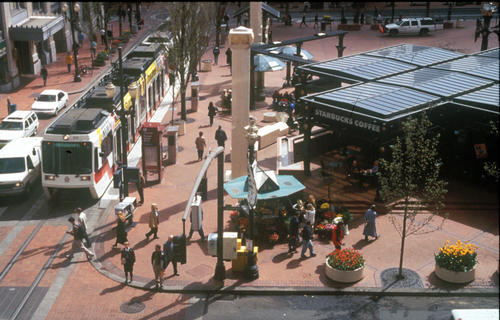
Planned at the same time as Portland's MAX light rail system, Pioneer Courthouse Square is both the city's favorite "living room" and a bustling transit hub, served on all four sides by buses and light rail. With all the transit options available, it's little wonder the parking lot the square replaced has gone completely unlamented.

Many cities can boast of impressive riverfronts, yet few allow you to walk across the water without vehicles rumbling by your side. That's one reason the new Millennium Bridge in London, a pedestrian-only crossing that glides you above the Thames, is an instant classic. The sleek structure is an attention-grabber from afar, but of greater importance is the well-used connection it provides between both banks of this great city.
Pedestrian malls, so often prescribed for struggling downtowns in the '70s, are now viewed as a complete disaster that actually hastened the ruin of central business districts. But not so fast... While many of these malls didn't work out, there are some cities where blocking off the main shopping street from traffic resulted in lively public places: especially in college towns such as Burlington, Vermont; Boulder, Colorado; and Charlottesville, Virginia. In Charlottesville, for instance, the mall attracts strolling crowds day and night who come downtown for the restaurants, bookstores, galleries, street vendors, bars, and general atmosphere of conviviality. It's worth taking a closer look at why pedestrian malls like these have succeeded, and what we can learn about creating a North American equivalent of Europe's beloved pedestrian zones.

The word "chaos" doesn't do justice to the amazing array of attractions in Chandni Chowk, a network of streets that forms the transportation spine of Old Delhi. Here, in Northern India's largest trading center, everything is for sale and everyone is out on the street. Elephants rub ankles with scooters, and the air is filled with a mixture of succulent aromas and sour odors. Exciting, but not for the faint of heart.
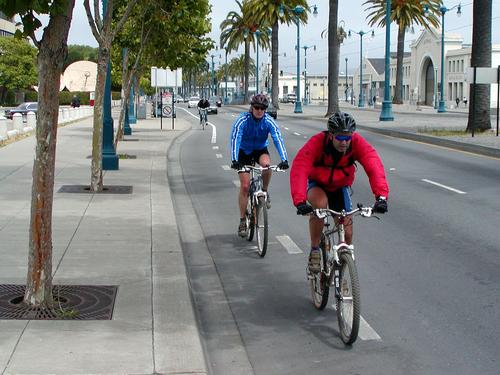
"Build it and they will come." And so they did--traffic swarming like cockroaches along the San Francisco waterfront when the double-decker Embarcadero Freeway was erected in the 1960s, cutting the heart of the city off from its historic origins as a port. The good news came from an unlikely event in 1989 when the Loma Prieta earthquake damaged the ugly structure beyond repair. "Tear it down and they will go away," urged civic leaders hoping to free the waterfront from this great crush of traffic. It was, and they did. Now hosting both light rail and vintage trolleys, the Embarcadero is a pedestrian-friendly, tree-lined transitway that comes alive at certain points (such as Fisherman's Wharf) and has the potential to grow into a world-class grand boulevard.
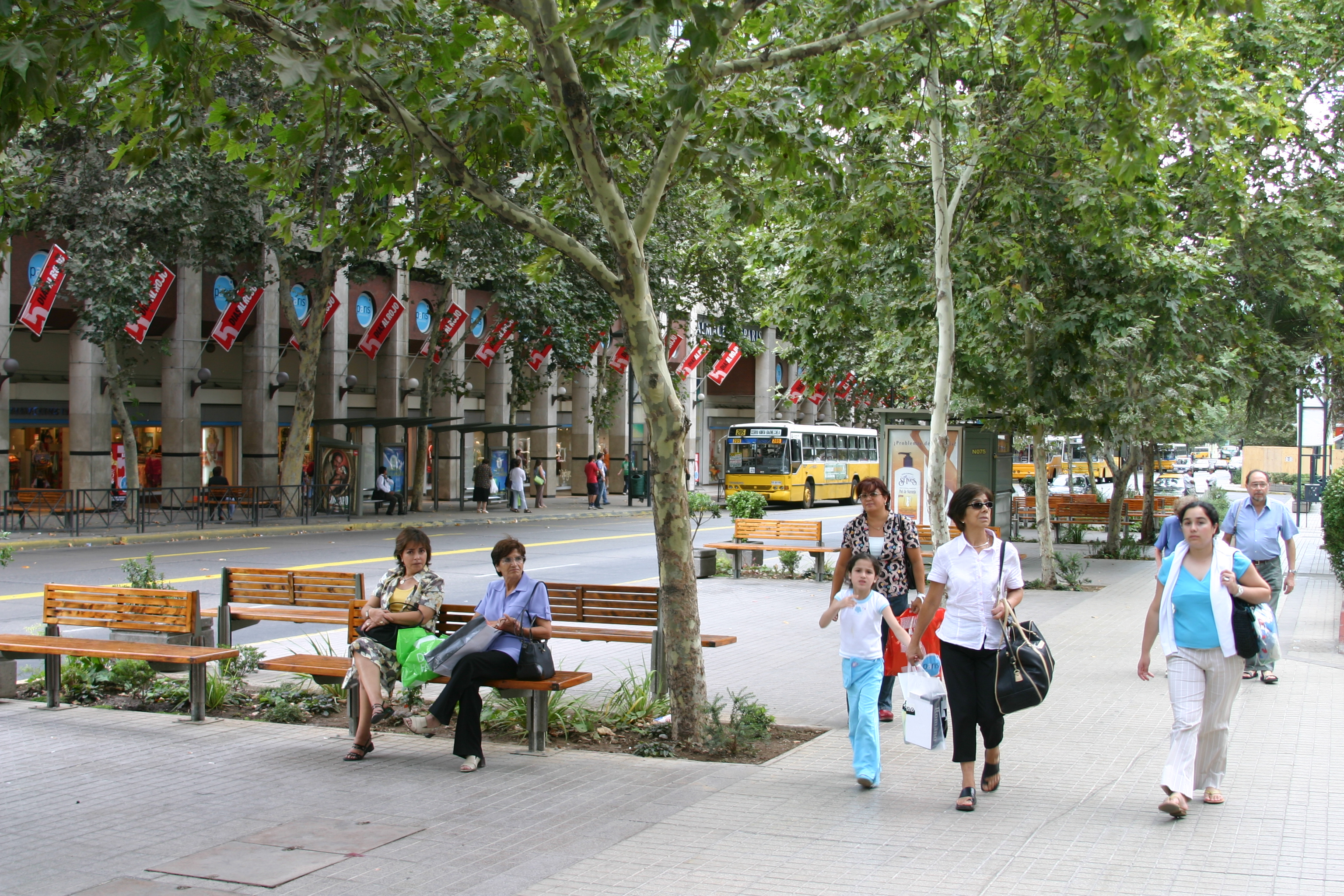
You won't see any parked cars on La Avenida Providencia in Santiago, Chile, because they're all underground. In their place: commodious sidewalks perfect for strolling with seating aplenty, not to mention great shopping.

Ever seen a bus go down steps? Make the trip to Coimbra, Portugal and watch in amazement as the city's mini-buses wend down narrow streets, through public squares, and yes, over a set of stairs. The stairs in question are part of a steep slope leading from a narrow side street to a public square, and the mini-bus straddles the steps with its wheels planted on smooth surfaces to each side. A unique lesson in just how flexible public transit can be.
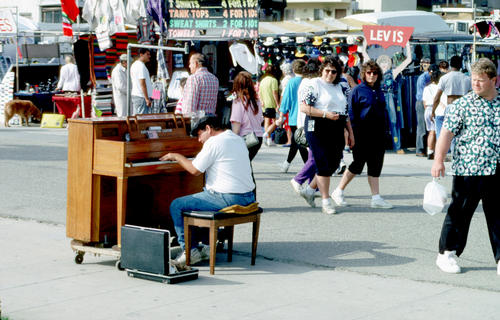
In an interesting exhibition of the endless diversity of humankind, Venice Beach in Los Angeles offers a public stage for artists, religious preachers of every stripe, and of course, half-naked muscle-bound exhibitionists headed for the beach. The street markets add a whole other dimension of social contact and exchange. "A human circus where no one holds back," says Fred Kent.

A more stylish showcase for beautiful people than its counterpart in Los Angeles, South Beach, Miami features streets that double as catwalks. It's the closest you'll ever come to watching an haute couture fashion show in public.
Subways are marvelous at getting you from point A to point B as fast as possible, but you don't see anything along the way. Elevated trains are much better for actually experiencing the city you are passing through. In Chicago, the world's most classic el system offers a great view of all the city's lively neighborhoods for a buck and some change.
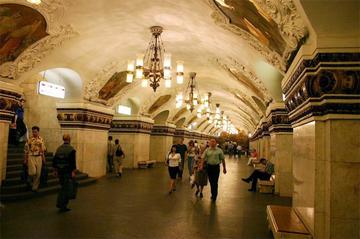
While Soviet Communism produced dismal results in most endeavors, you can't deny its one shining achievement: the world's most beautiful subway system. Each of the stations, built with marble and other gorgeous stone, is a palace constructed for the pleasure of everyday transit riders.
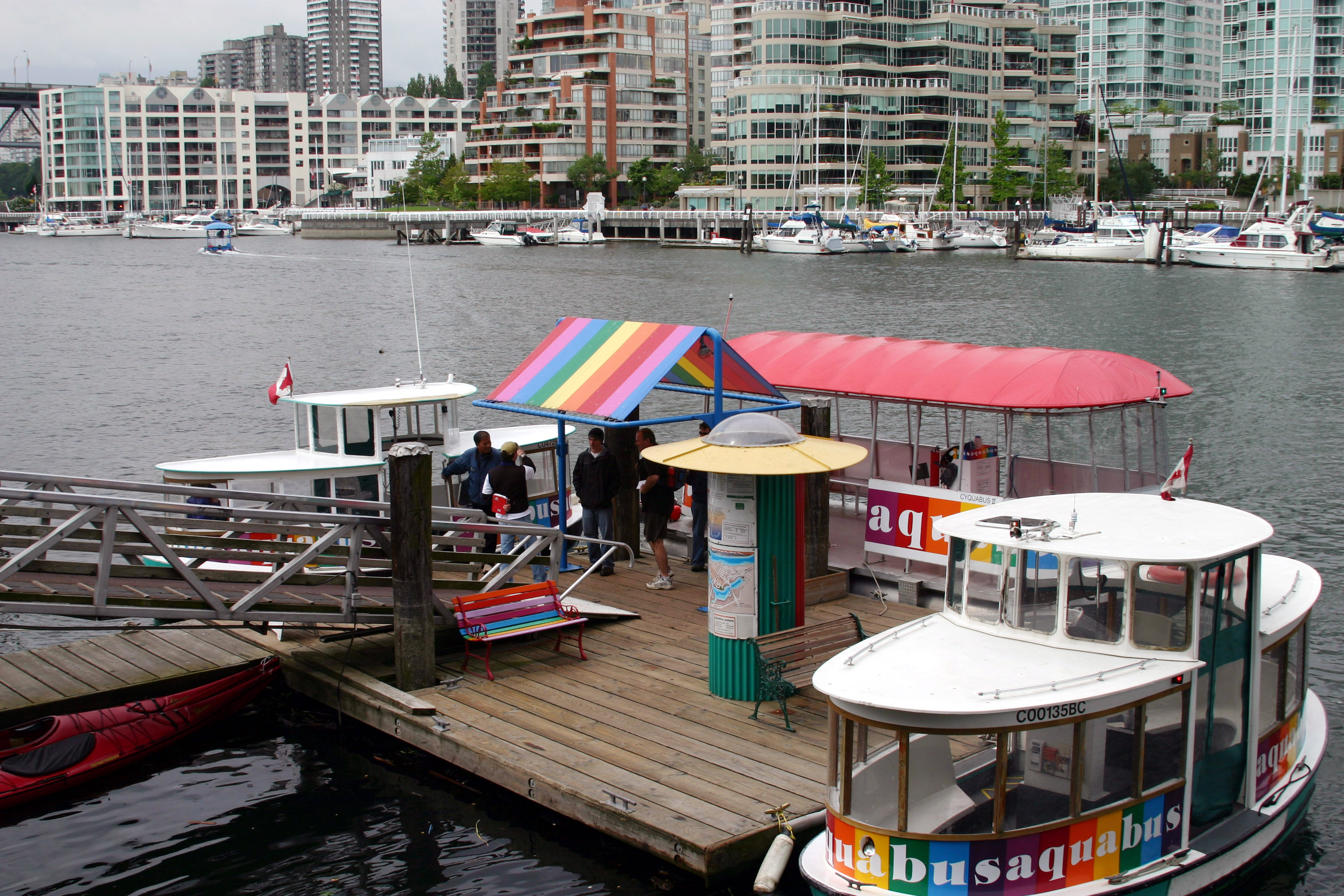
What future was there for an old rail line, once used to transport lumber to the village of Georgetown in the nation's capital and provide coal for its power plants? Reborn in 1996 as a 11-mile linear urban park, the Capital Crescent Trail is now the most-used rail-trail in the nation, transporting one million walkers and bicyclists a year to destinations as varied as suburban Bethesda Row, a trendy restaurant hotspot, and Fletcher's Boathouse, an angler's hangout. A green oasis in the midst of traffic-clogged suburbia, the Capital Crescent trail connects suburban Maryland to the Potomac waterfront with many natural and historic destinations in between. Whether you're a serious lycra-clad biker, student of America's industrial heritage, a nature-lover, or just out for a hike, this beloved rail corridor is a cool place to hang out on a hot summer day.
One of the coolest ways to get around any city anywhere are the small passenger boats called "aqua buses" that carry commuters and tourists to Vancouver's Granville Island, site of a world-class public market. Looking like mini-tugboats, these vessels run regular routes between stops on both sides of False Creek--which as its name suggests is not a creek at all but a fairly wide oceanic inlet that divides downtown from Granville Island (actually a peninsula) and neighborhoods to the west.
The rich text element allows you to create and format headings, paragraphs, blockquotes, images, and video all in one place instead of having to add and format them individually. Just double-click and easily create content.
The rich text element allows you to create and format headings, paragraphs, blockquotes, images, and video all in one place instead of having to add and format them individually. Just double-click and easily create content.
Body Text Body Link
The rich text element allows you to create and format headings, paragraphs, blockquotes, images, and video all in one place instead of having to add and format them individually. Just double-click and easily create content.
Here is some highlighted text from the article.




Headings, paragraphs, blockquotes, figures, images, and figure captions can all be styled after a class is added to the rich text element using the "When inside of" nested selector system.
Headings, paragraphs, blockquotes, figures, images, and figure captions can all be styled after a class is added to the rich text element using the "When inside of" nested selector system.
Headings, paragraphs, blockquotes, figures, images, and figure captions can all be styled after a class is added to the rich text element using the "When inside of" nested selector system.